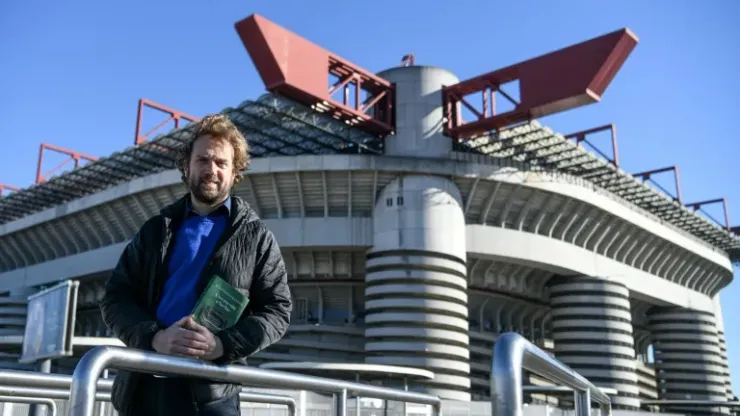Rome (AFP) – “Strange that a stadium supposed to host the opening ceremony of the 2026 Winter Olympics is already considered outdated and dead, isn’t it?” asks Gianfelice Facchetti, son of Inter Milan legend Giacinto Facchetti, of the lack of debate surrounding the future of the iconic San Siro stadium.
Local rivals Inter and AC Milan have for 75 years shared the ground in the west of the city, and this weekend the San Siro awaits one of the biggest derbies in years with both teams in the running for the Scudetto.
But for how much longer?
The future of one of the game’s most historic arenas, nicknamed ‘football’s La Scala’ is uncertain.
In December, Inter and AC Milan unveiled what their new shared home could look like. Named The Cathedral, the stadium will be located in the same San Siro district of Milan as their current ground, officially called the Stadio Giuseppe Meazza.
From the imposing existing stadium, the project would be to keep only one or two towers, as a souvenir.
And even if it escaped destruction, the stadium would only become a “dead piece of cement” without its two clubs, Facchetti told AFP.
The opening ceremony of the 2026 Winter Olympics hosted by Milan and Cortina could be the current San Siro’s swansong, a century after its inauguration.
Facchetti, a 47-year-old director, actor and writer, regrets that the future of the “symbol” of Milan did not feature in recent local elections.
He has contributed to the debate in a book “Once Upon a Time at the San Siro” that recounts the story of the city and its sporting history.
In particular, he recounts how the stadium was the first in the city dedicated to football, with English-style stands, when it was built in 1926 at the request of industrialist Piero Pirelli, then president of AC Milan.
He also reflects on how it became the stadium of Inter Milan from 1947, and from 1980 was named after Giuseppe Meazza, a former Inter star of the 1930s who also briefly played for AC Milan.
“For everyone it remains the San Siro,” continued Facchetti, whose father spent his entire senior career at Inter, winning four Serie A titles between 1963 and 1971.
A pioneering defender, Facchetti also won the European Championship with Italy in 1968 and was runner-up two years later at the World Cup.
– ‘Poetic and romantic’ –
“I don’t think there is a city in Europe where two clubs with such rich identities and records have shared much of their history in one place,” said Gianfelice Facchetti.
“The show which the Milan derby represents, poetic and romantic, does not exist anywhere else in Italy.
“According to my calculations, I’ve spent a full year of my life at the San Siro, between matches and concerts!
“I’ve lived San Siro at different times and from different angles, I always find it more magnetic, even when nothing is happening there.”
The idea of telling the story of “his” San Siro came last year when he returned to watch matches, benefiting from invitations from Inter to a stadium closed to the general public due to coronavirus.
“At a time when everything that seemed obvious to us was a little less so, like going to the stadium, I felt that this emptiness was talking to us and telling us things about what happened at San Siro,” he explained.
“I wanted to make this void speak as we began to talk insistently of its future and of a possible destruction.
“I don’t know what will happen, but should it happen without even talking about it?
“The San Siro is a place of popular culture. And where there is popular culture, there must be democracy.”
200+ Channels With Sports & News
- Starting price: $33/mo. for fubo Latino Package
- Watch Premier League, Women’s World Cup, Euro 2024 & Gold Cup
The New Home of MLS
- Price: $14.99/mo. for MLS Season Pass
- Watch every MLS game including playoffs & Leagues Cup
Many Sports & ESPN Originals
- Price: $10.99/mo. (or get ESPN+, Hulu & Disney+ for $14.99/mo.)
- Features Bundesliga, LaLiga, Championship, & FA Cup
2,000+ soccer games per year
- Price: $5.99/mo
- Features Champions League, Serie A, Europa League & Brasileirāo
175 Premier League Games & PL TV
- Starting price: $5.99/mo. for Peacock Premium
- Watch 175 exclusive EPL games per season






